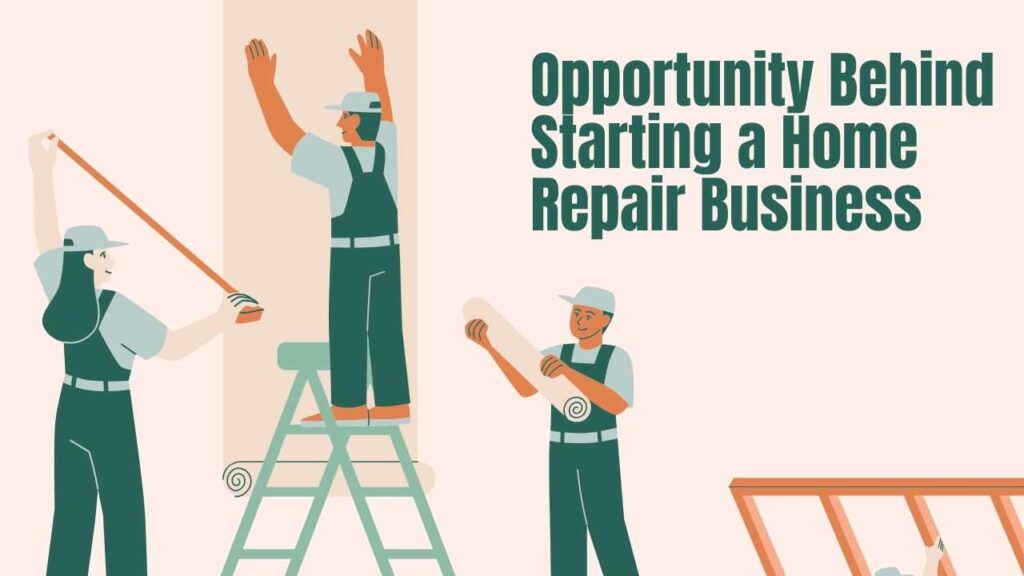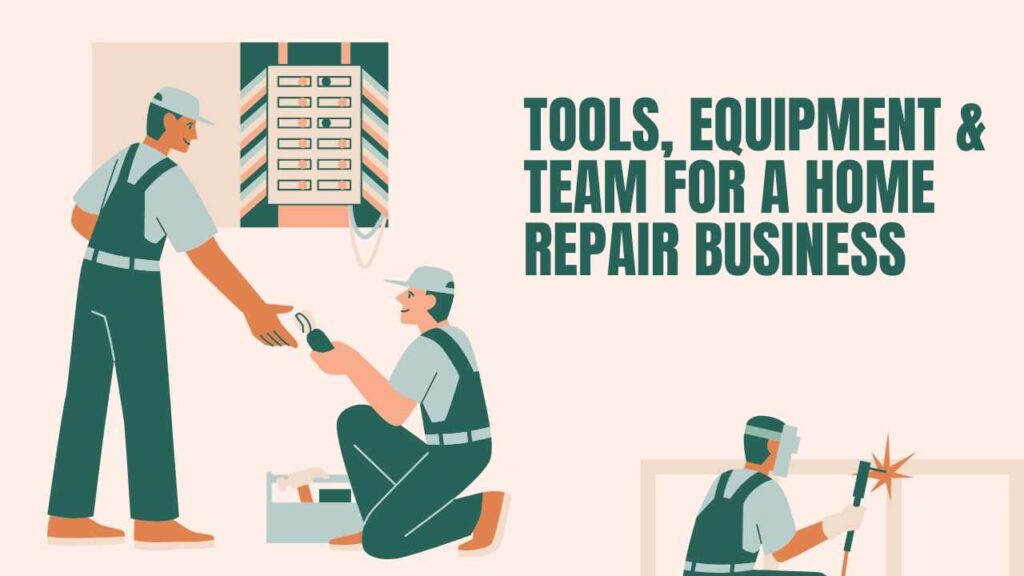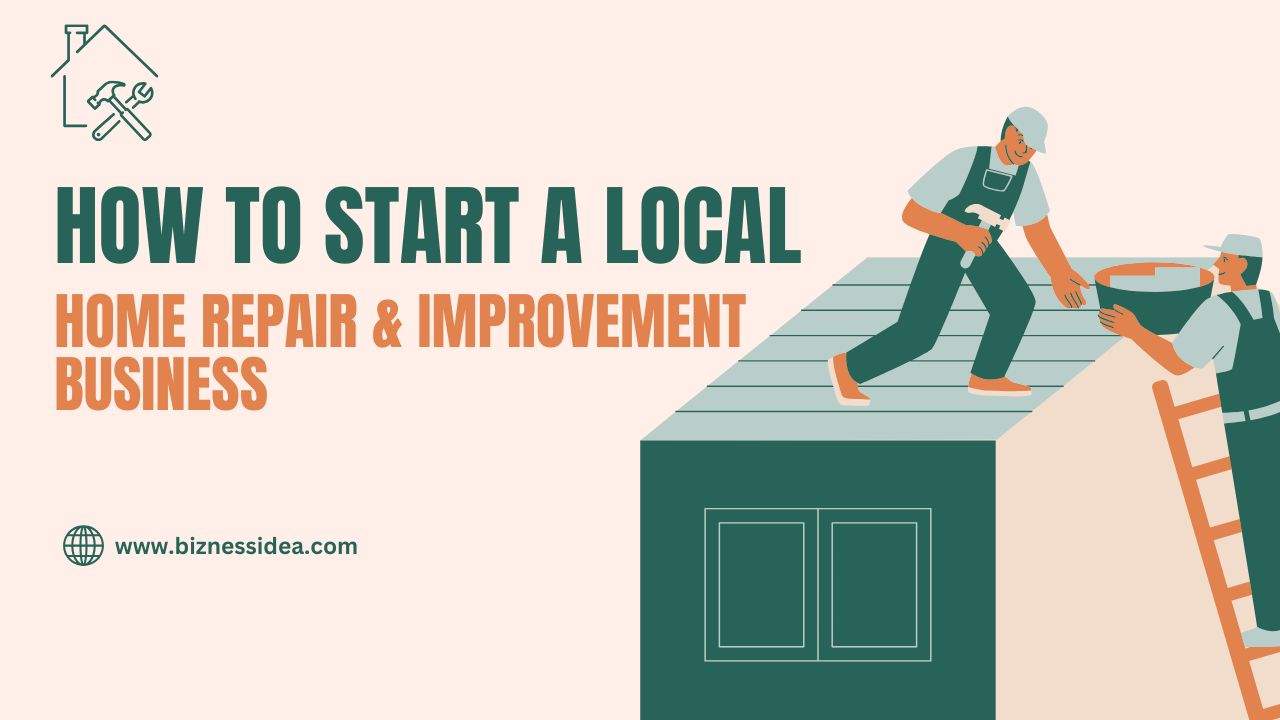If you’ve ever wanted to start a home repair business, local demand is already knocking. From small repairs to full room upgrades, homeowners constantly look for reliable hands. This guide walks you through how to set up a home improvement business startup, run a dependable local home repair services operation, and scale over time — focusing on actionable steps, practical examples, and lessons from existing leaders.
Whether you’re in India, working from a tier-2 city, or looking to expand in smaller markets, the key principles remain the same. Let’s get started.
Why Starting a Local Home Repair & Improvement Business Is a Good Bet

Urbanization, rising incomes, and ageing housing stock mean constant opportunity for the home repair business. In India, the home renovation market is expected to grow at about 8.5% CAGR in coming years (Source: 3ECPA) (Source: 3ECPA).
Also, platforms like Urban Company (formerly UrbanClap) show how aggregating local service providers into a marketplace can scale the business.
Key advantages:
- Lower barrier to entry (you need tools and skills more than big capital)
- Recurring business (maintenance, seasonal upgrades)
- Word-of-mouth helps grow trust fast in local markets
- Service differentiation (faster, cleaner, warranty) wins
Step 1 – Planning & Niche Definition For Starting a Home Repair Business
Solid planning saves trial-and-error confusion down the road.
List your existing skills & choose core services
Start with what you know well: carpentry, plumbing, painting, electrical, tiling. The general handyman guides advise selecting a few core services initially rather than offering everything at once. (Source: Servicetitan, Fieldax)
Analyze your local market & customer segment
Go door to door, talk to neighbors, look at competitors’ offerings. Some customers may prefer paying for a reliable maintenance contract, others only call for urgent fixes. HandymanStartup suggests targeting segments like elderly homeowners or busy professionals willing to pay for convenience. (Source: HandymanStartup)
Estimate break-even & pricing strategy
Create a simple spreadsheet estimating costs: tools, transport, materials, licensing, marketing, insurance. Then model how many repair jobs per month you’ll need. Use both hourly rates and task-based pricing (e.g., “paint three walls”). Many handyman businesses succeed by quoting by job for clarity. (From reddit discussion: charge by job rather than hourly) (Source: Reddit /r/handyman)
Step 2 – Legal Setup, Licensing, & Risk Protection To Start a Home Repair Business
Many high-quality guides emphasise this foundational stage as non-negotiable.
Choose your business structure & register to start a home repair business
Decide whether to operate as sole proprietorship, partnership, LLC, etc. Register with your municipal or local authority. In India, you may need trade license, Shops & Establishment registration, or other local permits. (Source: Startuptalky)
Get required licenses & permits
Some repairs, especially structural or electrical work, demand contractor licenses. Also check zoning rules if you plan to store equipment at home or use a workshop. In many regions, home repair services require a business license. (Source: CalOSBA “Business Quick Start Guide Domestic Repair” pdf)
Insure your business
Liability insurance is essential. If your work accidentally damages property or someone is injured, insurance protects you. Also consider insuring your tools and vehicles. The Jobber guide recommends “small business insurance” early in your setup. (Source: Jobber)
Contracts, warranties & standard terms
Use clear service agreements — define scope, timeline, costs, liabilities. For larger tasks, written contracts instill confidence. Offer warranties on workmanship to boost trust.
Step 3 – Tools, Equipment & Team To Start a Home Repair Business

Your operations depend heavily on what you bring and who you bring along.
H3: Essential tools & a reliable vehicle to start a home repair business
Invest in quality basics: drills, hammers, saws, levels, safety gear. Also ensure you have a van or vehicle to transport tools and reach client homes reliably.
Hiring & subcontracting
Initially, you may work solo. As orders grow, hire subcontractors or part-time staff. Ensure they have skill alignment, basic training, and a clear service standard. Many guides advise starting small and scaling contracts gradually.
Workflow & tools software
Use job scheduling, invoicing, and CRM tools (many handyman business guides recommend this). A simple Google Sheets or basic field service app works initially.
Step 4 – Marketing for Local Home Repair Services
Your technical skills won’t matter if people don’t find you.
Local SEO & online presence to start a home repair business
Create a simple website, list on Google My Business, and optimize for terms like “local home repair services,” “home repair business guide,” and specific service keywords (e.g. “leak repair near me”). Collect reviews and photos.
Offline marketing & partnerships
Flyers, brochures, local newspaper ads, and tie-ups with realtors or property managers help. Doing a free fix in one home may lead to referrals in the neighborhood.
Pricing packages & promotional offers
Offer bundled services (ex, painting + minor repairs) or seasonal checkups. Discounts for first clients, loyalty plans, or maintenance contracts help maintain steady work.
Step 5 – Deliver Consistently & Build Reputation
This is where many businesses rise or sink.
- Show up on time, be courteous, protect client property (floor covers, cleanup).
- Take photos before/after. Provide clear invoices and receipts.
- Encourage happy clients to leave reviews and refer you.
- Offer small warranties or free follow-up checks for confidence.
Over time, reputation, word-of-mouth, and reviews will reduce acquisition cost and fuel growth.
Growing Into a Renovation Business
Once you’re stable, expand into renovation and larger improvement projects.
- Gradually add services: tiling, minor remodeling, interior finishing.
- Hire or collaborate with specialists (plumbers, electricians).
- Bid for medium contracts (rooms, kitchens).
- Optimize internal processes (procurement, scheduling) to handle complexity.
Many home improvement business startups begin with small maintenance tasks and evolve into full-scale renovation providers.
Conclusion
To start a home repair business locally is to harness a perennial demand: homes will always need repair, maintenance, and improvement. The difference between a hobby and a business lies in your planning, legal foundation, consistent delivery, and marketing. Launch carefully, treat every job as a reputation-builder, and scale thoughtfully. Over time, your local services can evolve into a full renovation and improvement enterprise.
FAQs
Q1. How much capital is needed to start a home repair business?
Ans. It depends on the scope and location. Basic tools, licensing, insurance, and a vehicle might cost somewhere between modest thousands to tens of thousands (local currency). Start lean and scale.
Q2. Do I need a license to operate a home repair business?
Ans. Yes — for some trades (electric, plumbing, structural) you may need specific contractor licenses or trade permits. Always check with your local municipal or state rules.
Q3. How should I price my repair services?
Ans. Use job-based pricing for clear tasks (e.g. paint a wall) and hourly rates for open-ended jobs. Factor in overhead, travel, material markup, and risk buffer.
Q4. Can I start solo and scale later?
Ans. Absolutely. Many home improvement business startups begin with just the owner + tools. Once demand rises, hire subcontractors or full-time staff.
Q5. How do I get my first few clients?
Ans. Start locally: hand out flyers, fix jobs for friends, ask for referrals. Use local SEO and Google My Business to show up in searches like “local home repair services.”
Q6. Should I offer a full renovation service or stick to repair?
Ans. Begin with repairs & small improvement jobs — these have lower risk and faster turnaround. Once you build a reputation, branching into full renovations is natural.













